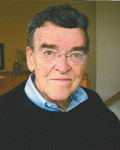July 5, 2011
Max’s Musings
 By Max Molleston
By Max Molleston
Not long ago, as ideas of summer sprouted, reading projects for adults cropped up in the media. Some newspapers and magazines feature new novels and such put forward by some “expert.” My idea of reading for the summer is a newspaper at a leisurely pace, or like me, a subscriber to magazines, settling back with an article or two that interests me and enjoying the read. Lots of us who are 50+ are comfortable with that idea and that kind of leisure time. We are serious readers, too. Non-fiction and fiction, whatever our choice, may mean a trip to the library and perhaps to a bookstore. Maybe our new choice of reading is checked out and on a list as well, but can be purchased at the store.
There are those of us who have a textbook or two left from our classes with required reading. I can’t imagine why, but it does occur. Books like the one I am using as part of this July column. Laurence Perrine’s textbook titled Literature, Structure, Sound and Sense, first published in 1956, when I was in college. Sift through 514 pages and come to Chapter One, What is Poetry? First sentence: Poetry is as universal as language and almost as ancient. Most of us don’t think of it as such, but if you commit to Shakespeare and Romeo and Juliet, you know the approach is straight forward, even though the wording and the style of presentation is quite different from today.
Back to the book, if you will. Perrine says, “It pleases us.” He offers lots of examples including this from Alfred, Lord Tennyson.
The Eagle
He clasps the crag with crooked hands
Close to the sun in lonely lands,
Ringed with the azure world, he stands.
The wrinkled sea beneath him crawls;
He watches from his mountain walls,
And like a thunderbolt he falls.
It is a beautiful and truthful rhyme by a craftsman, describing the Eagle in one environment. Eagles we know, nest in trees and perch in them, close to the Mississippi River. The printed poem works. Our brains connect with images in the words. Azure world, wrinkled seas, and so on. The poem is all image, and Tennyson is skillful in layering and enforcing these in his build up to the power of this bird. “Like a thunderbolt he falls.”
Laurence Perrine asks us to listen as the poem is read. For those of us who like to hear a good reader emote on a poem, the excitement is significant. We introduced some attributes of the works of William Shakespeare. How about the effort in this song lyric from Shakespeare.
Winter
When icicles hand by te wall,
And Dick the shepherd blows his nail,
And tom bears logs into the hall,
And milk comes frozen home in pail,
When blood is nipped and ways be foul,
Then nightly sings the staring owl,
Tu-whit, tu-whoA merry note,
While greasy Joan doth keel the pot.When all aloud the wind doth blow,
And coughing drowns the parson’s saw,
And birds sit brooding in the snow,
And Marian’s nose looks red and raw,
when roasted crabs hiss in the bowl,
Then nightly sings the staring owl,
Tu-white, tu-whoA merry note,
While greasy Joan doth keel the pot.
This imagery depicts, with good accuracy, a 16th Century country house. Explanations are due, Keel is to skim the pot, and the roasted crabs are crab apples. My mother made crab apple jelly from what amountedto a messy process, gathering the small fruit and doing all the rest.
We hope you find all kinds of reasons to celebrate the birth of our nation. In Iowa city we celebrate the seventh birthday of our grandson on July 3rd. I hope you enjoyed our trip through some images that make some sense to you, about the Eagle, and in the high skill of William Shakespeare. We’ll be here a month from now, and we won’t tug a textbook along.
Filed Under: Personal Growth
Tags: Alfred Lord Tennyson, Azure World, Craftsman, Crag, Crooked Hands, Laurence Perrine, Leisure Time, Leisurely Pace, Lonely Lands, Mississippi River, Mountain Walls, Musings, New Choice, Non Fiction, Rhyme, Romeo And Juliet, Tennyson The Eagle, Thunderbolt, Trip To The Library, Wrinkled Sea
Trackback URL: https://www.50pluslife.com/2011/07/05/max%e2%80%99s-musings-23/trackback/


